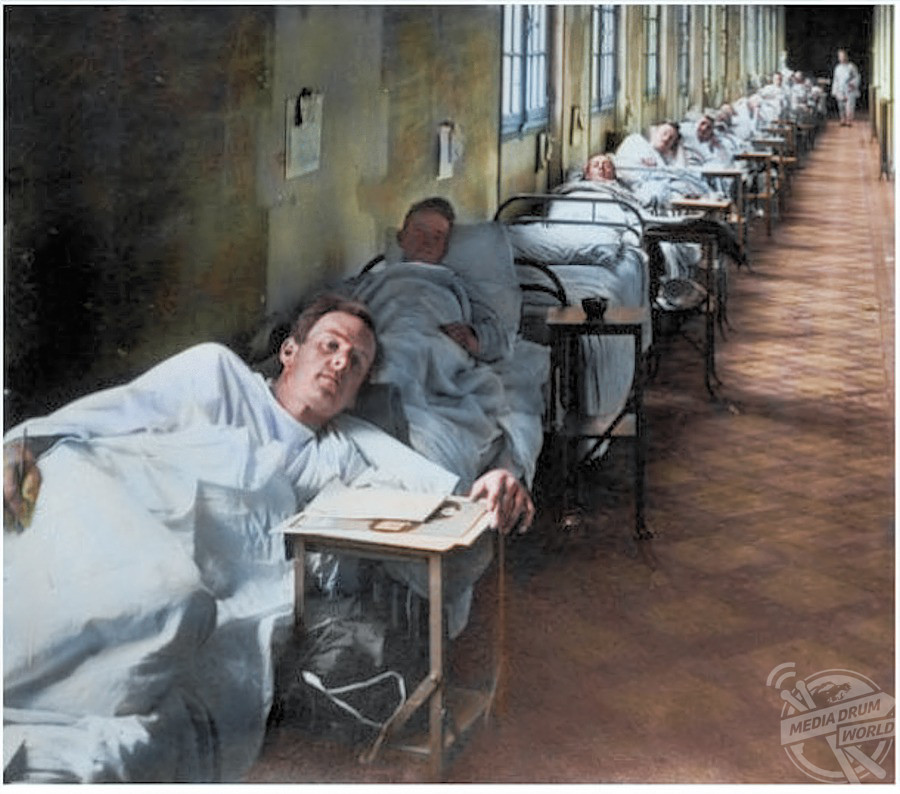By Tom Dare
A SERIES OF fascinating colourised photos showing the devastating effects of a flu epidemic which killed around 50 million people at the beginning of the 20th century have resurfaced today, on the 100th anniversary of the Spanish flu epidemic which swept across the world.
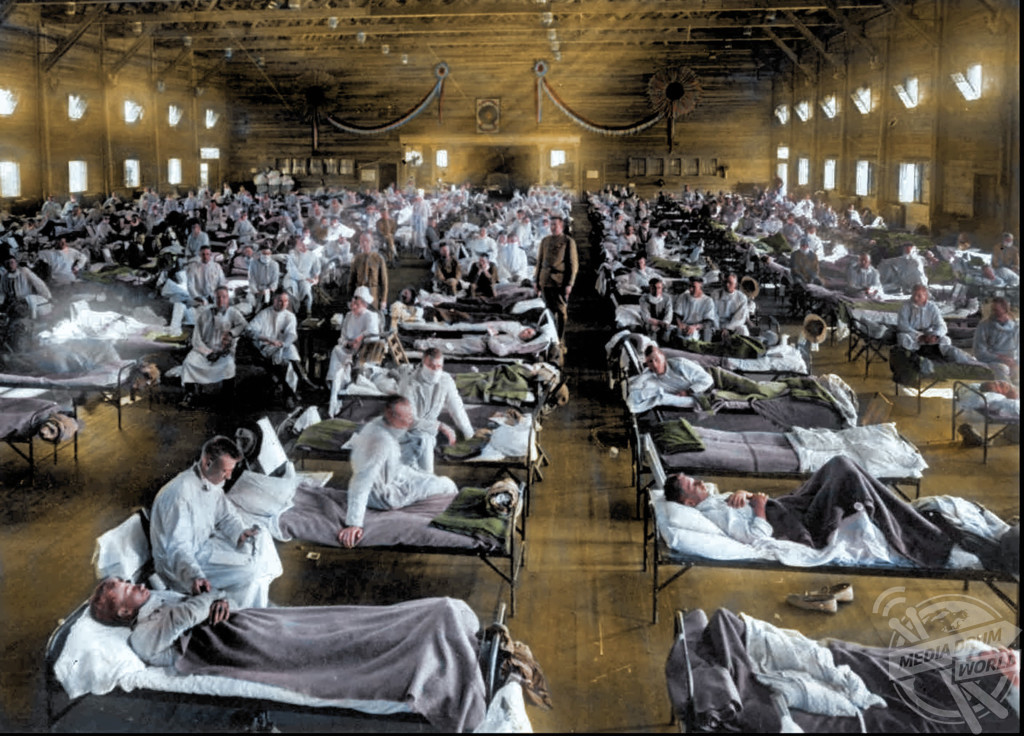
The pictures, originally taken in 1918, show how communities across America struggled to cope with the deadly H1N1 influenza virus, nicknamed the Spanish Flu after extensive media coverage of the epidemic’s effects in Spain.
One image shows a hospital hallway full of the beds of men struck down by the flu, while another shows a group of baseball players wearing face masks as they take place in a match.
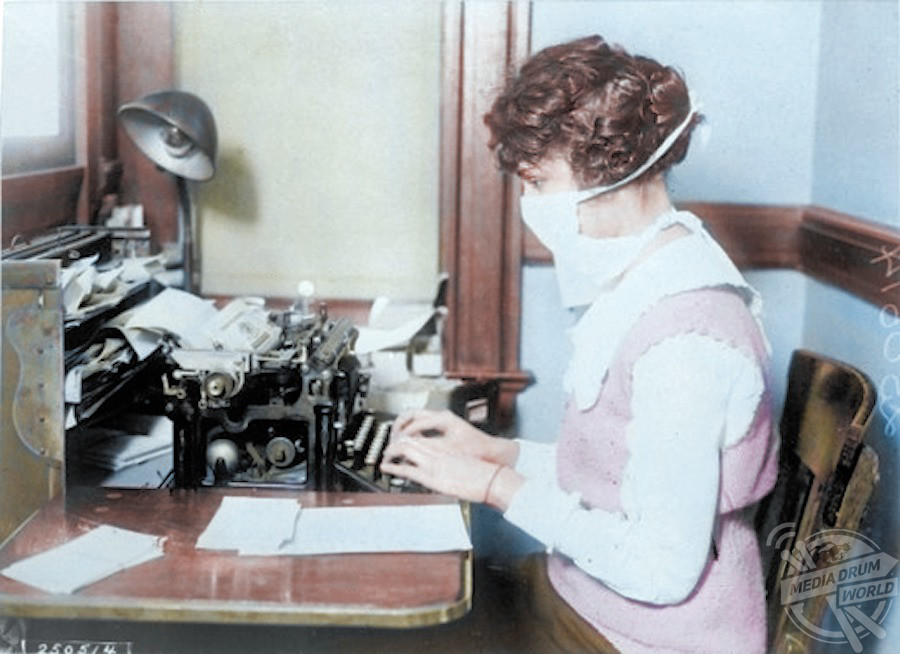
Though its origins are unclear, the 1918 flu pandemic was thought to have infected around one fifth of the world population at the time, killing anywhere between 20 and 70 million people across the space of two years.
And while influenza usually hits the elderly and the youngest in society the hardest, the 1918 flu pandemic predominantly killed young adults who had previously been healthy.
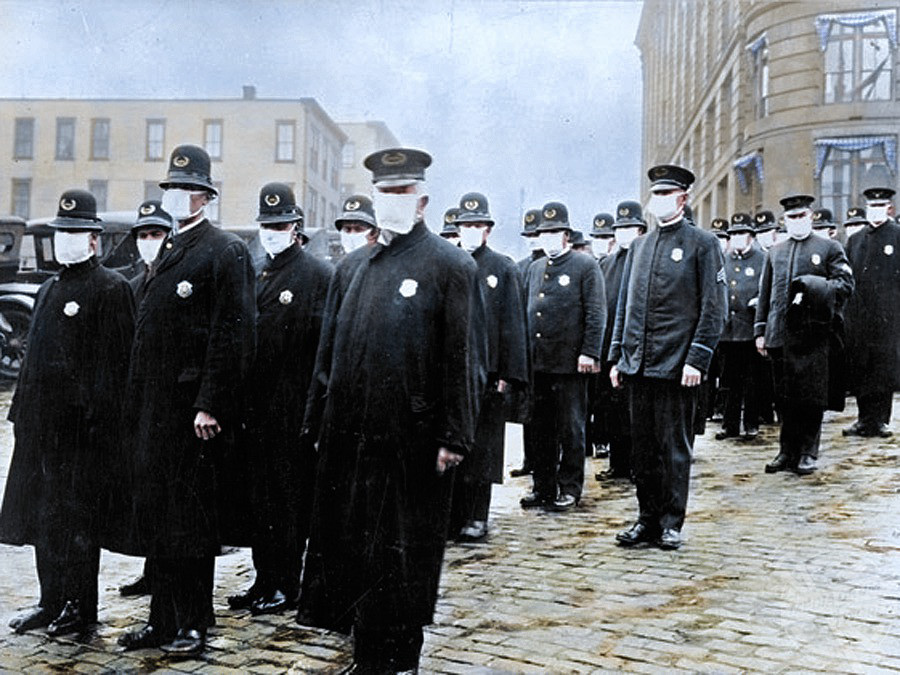
It is thought that the war played an important role in the spread of the flu, with large numbers of soldiers from all around the world gathering in small spaces before eventually heading back home. The crowded camps were the ideal conditions for the flu to spread, meaning it was never localised to a particular area.
The pandemic has been described as the greatest medical holocaust in history, and is thought to have killed more people between 1918 and 1920 than the Black Plague killed in a seven year period from 1346 to 1353. It is also said that Influenza killed more people in 24 weeks than AIDS killed in 24 years.
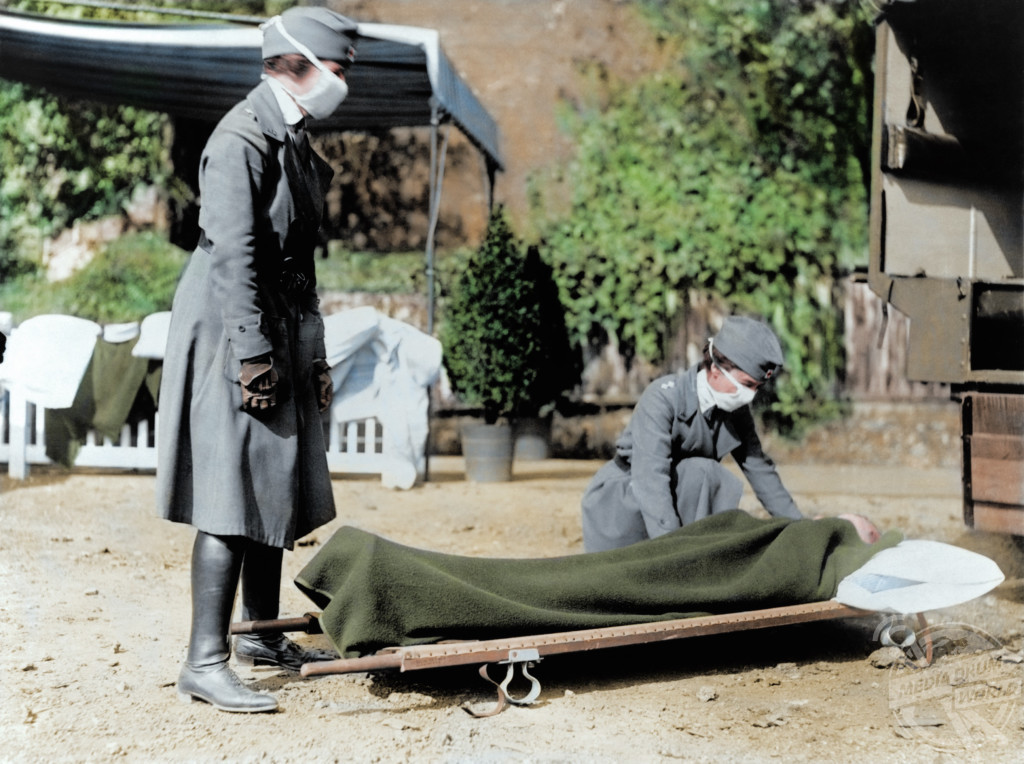
Perhaps one of the most high-profile people who contracted the flu but lived to tell the tale was then-American President Woodrow Wilson. Having begun negotiations regarding the end of the war with the French and the British in January 1918, it is reported that Wilson was ready to return leave due to the lack of progress, before he was struck by the deadly illness in April of the same year. Before becoming ill, the President had been staunchly opposed to overly-harsh penalties being imposed on Germany, yet following a few says of extreme illness he reportedly gave in to all of France’s demands for a harsh settlement for Germany.
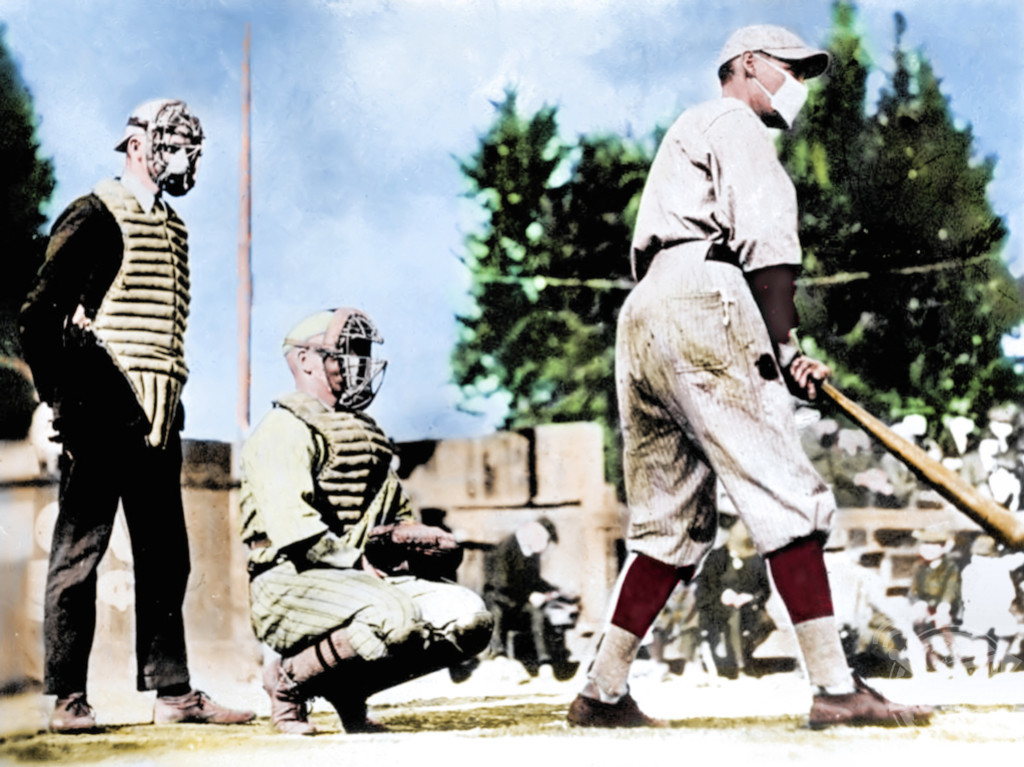
British Prime Minister David Lloyd George remarked on Wilson’s “nervous and spiritual breakdown,” in the middle of the conference, while one of Wilson’s closest aides noted that he “never knew the president to be in such a difficult frame of mind as now. Even while lying in bed he manifested peculiarities.” Another of Wilson’s aides, a man in his mid-20s, had caught the flu at the same time as the President, and was pronounced dead four days later.

